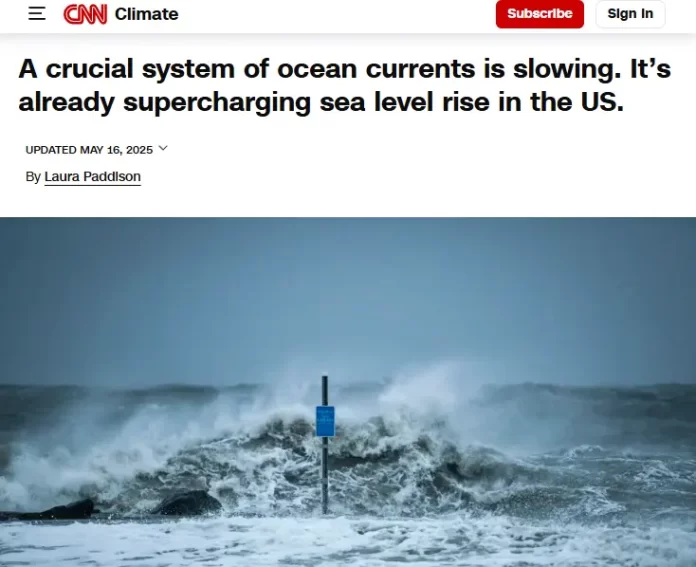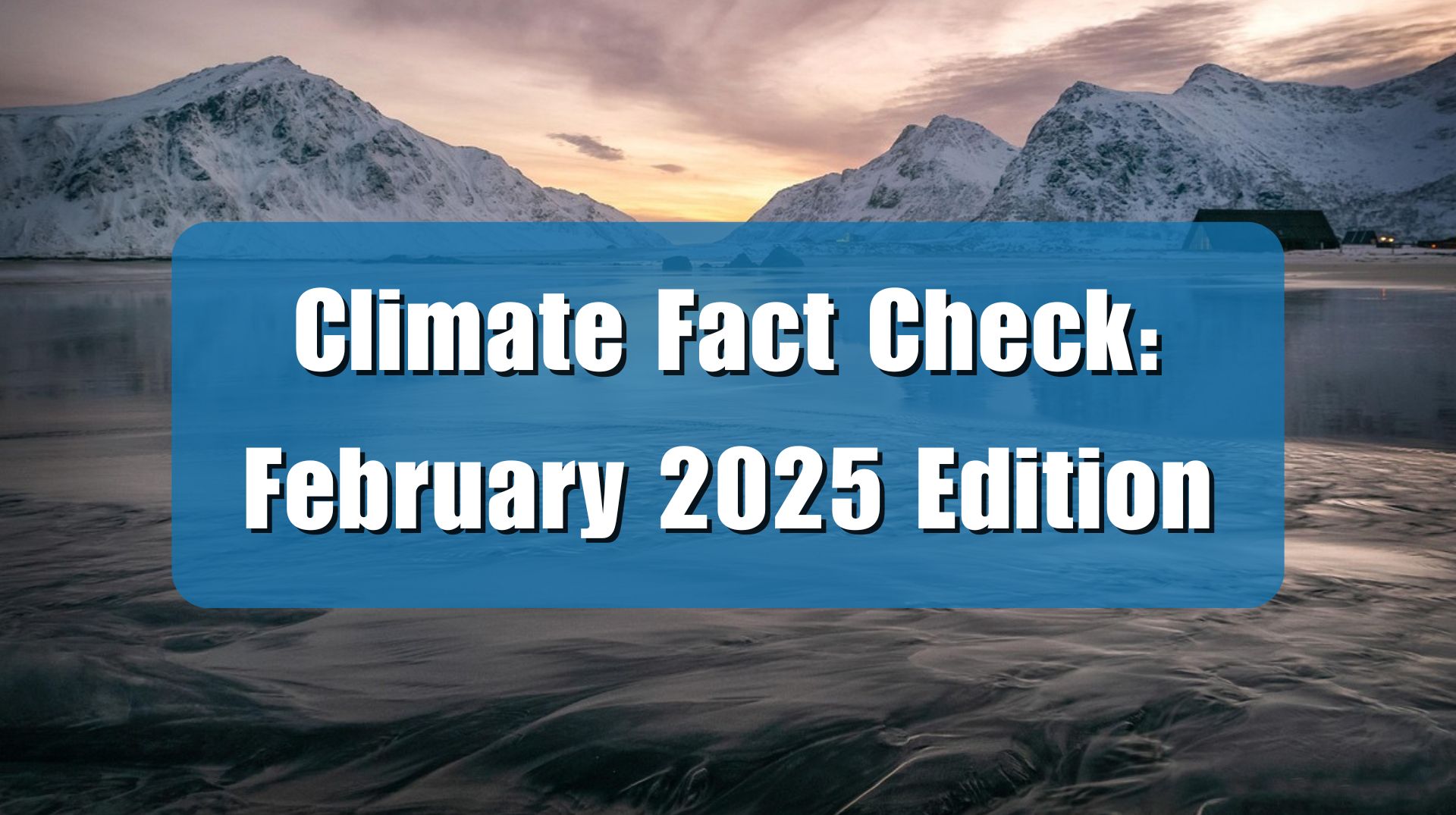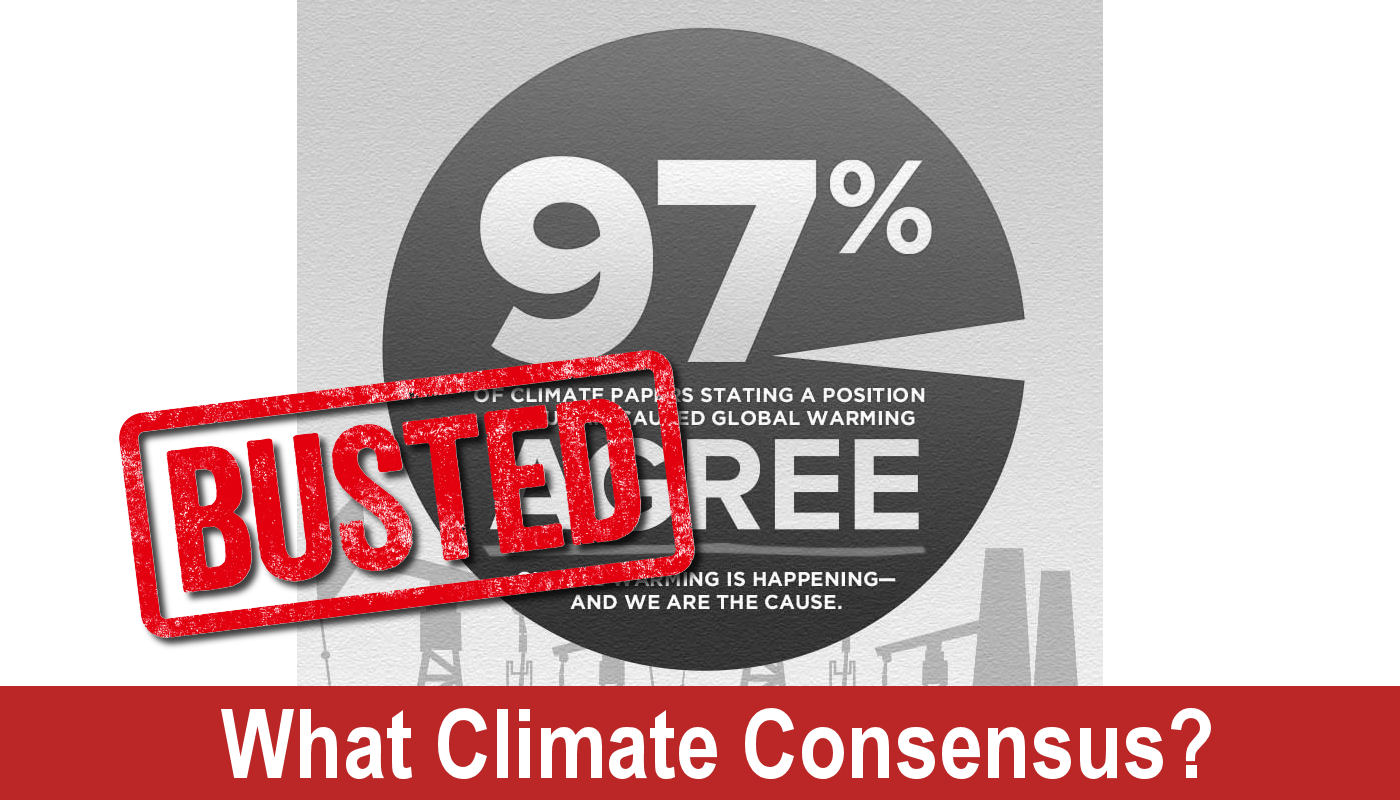A recent CNN article by Laura Paddison, titled “A crucial system of ocean currents is slowing. It’s already supercharging sea level rise in the US,” references new research on the Atlantic Meridional Overturning Circulation (AMOC) to claim the current is slowing down leading to rising seas and costly, deadly coastal flooding. This false claim is based solely on a single, as yet unpublished and unverified, study which used a single climate model’s projections. Evidence, such as other studies and historical reporting on AMOC trends demonstrate that there is no consensus on the status of the AMOC. Rather, scientists’ predictions and the media’s reporting on the AMOC have been flip-flopping for nearly two decades—unable to decide whether AMOC is speeding up, slowing down, or staying steady.
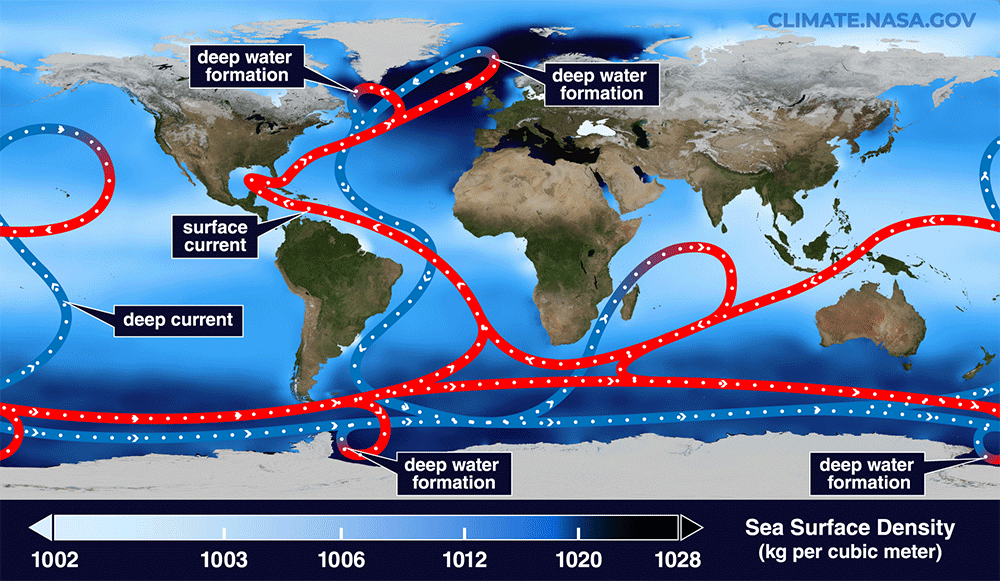
The Atlantic Meridional Overturning Circulation has been among the climate alarmists’ top go-to bogeyman for years. There was even a sci-fi movie made about its collapse, The The Day After Tomorrow, in which the AMOC;s collapse leads to a new ice age within days. Whether the movie made for good drama is debatable, but what is not debatable was the vigorous criticism that climate scientists leveled against its portrayal of climate change. Looking at the history of AMOC predictions, according to some studies, it’s collapsing. In others, it’s strengthening. Sometimes studies suggest that the AMOC has not changed measurably at all in recent years. The problem is scientists have not had a reliable way to observe AMOC long enough to make definitive statements. That hasn’t stopped the press from pushing speculative, often contradictory, claims based on every new study.
Heartland President James Taylor documented this ever-changing narrative in his 2021 article at Climate Realism, highlighting how climate activists have repeatedly contradicted themselves on AMOC trends. One year it’s accelerating—fueling European warming—another year it’s stalling, threatening a new Ice Age. The takeaway? We simply don’t know enough to draw sweeping conclusions, let alone restructure financial lending or credit scoring based on these speculations.
In this case, CNN isn’t even citing published research, but relies heavily on yet unpublished research started in 2024 by Liping Zhang—an oceanographer with National Oceanic and Atmospheric Administration’s (NOAA) Geophysical Fluid Dynamics Laboratory—suggesting that AMOC may be weakening due to climate-related factors and could be ingincreased coastal flooding. While Zhang’s modeling work may indeed raise valid scientific questions, CNN fails to mention the massive caveats attached to this line of research: sparse observational data, high model uncertainty, and a lack of consensus within the scientific community.
Had CNN done a even a modest amount of fact checking, it would have found that two peer reviewed studies published in a top science journal, Nature, in January and February of this year came to precisely the opposite conclusion as the unpublished study that the “news” organization is touting. Those studies looked at data and models and concluded that the AMOC is showing no sign of decline and was unlikely to do so even under climate extremes.
In addition, CNN ignored the fact that the Intergovernmental Panel on Climate Change (IPCC) in Chapter 12 of its Sixth Assessment Report: Emergence of Climate Impact Drivers, has found no correlation between climate change and coastal flooding in the present, and predicts none in the future as shown in the table below, note the yellow highlighted row “Coastal flood.”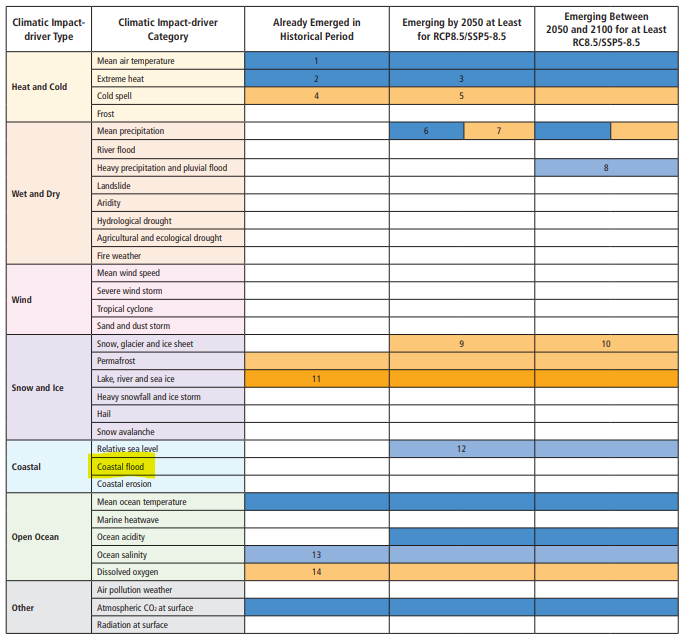

It is hard to believe there would be no coastal flooding if glacial melt was rapidly occurring which would be necessary for the AMOC to slow abruptly. Even when CNN acknowledges the uncertainty about the research’s claims, quoting Gerard McCarthy, an oceanographer at Maynooth University in Ireland, who candidly admits: “The science is still not clear,” its article then immediately pivots into speculative catastrophe—claiming future foreclosures, economic loss, and insurance shocks—all supposedly based on AMOC’s decline. That’s not reporting. That’s narrative crafting.
Making matters even worse, CNN has been corrected on this issue before. In 2024, Climate Realism published a comprehensive takedown of similar claims in a piece titled “No, CNN and Other Media Outlets: Climate Change is Not Causing the Ocean Circulation to Collapse”. The article points out that the limited time frame of AMOC observations—barely two decades—renders any long-term predictions highly speculative. Simply put: if you haven’t watched something for long, you can’t know with any confidence what it is going to do in the future. Also, climate model projections can’t help this problem, since they are known to be flawed and are dependent upon the quality of the assumptions built into them. If modelers assume climate change will cause an AMOC collapse, one shouldn’t be surprised when the models they create forecast a collapsing AMOC.
CNN compounds the errors resulting from its dubious use of science by projecting even more unjustified economic extrapolations. They tie AMOC-driven flooding to increased foreclosures, credit instability, and higher insurance premiums. This is a sleight of hand: attributing economic pressures caused by real estate inflation, poor zoning, and coastal overdevelopment to hypothetical ocean current changes.
The truth is that insurance losses and flood exposure are driven by where people build and what they build, not by a slow-motion current thousands of miles offshore. This was recently exposed by Climate Realism in CNN’s Climate Con: How Real Estate, Not Storms, Drives Insurance Costs. That article cites NOAA’s own data, such as the Billion-Dollar Weather and Climate Disasters database, which consistently shows that the rising cost of disasters is due to increased development in high-risk areas—not increased frequency or intensity of disasters.
CNN’s article on the AMOC is yet another example of how mainstream media misleads the public by dressing up uncertain science as inevitability. By leaning on AMOC modeling that lacks a solid observational foundation and is directly contradicted by other scientific research, then spinning speculative findings into warnings of financial collapse, CNN continues a disturbing trend: using unsubstantiated climate narratives to generate fear and political action, facts be damned. Even thought the experts CNN quotes say, “The science is still not clear,” CNN’s fail to practice any journalistic caution. Instead, CNN peddles science on the AMOC that has already been debunked, using it to support alarming narratives about insurance markets, lending, and housing. The result is a disservice to both science and the public, dismissing real science and sound economic and public policies in the pursuit of progressive political ends, like bigger government intervention in energy markets.













